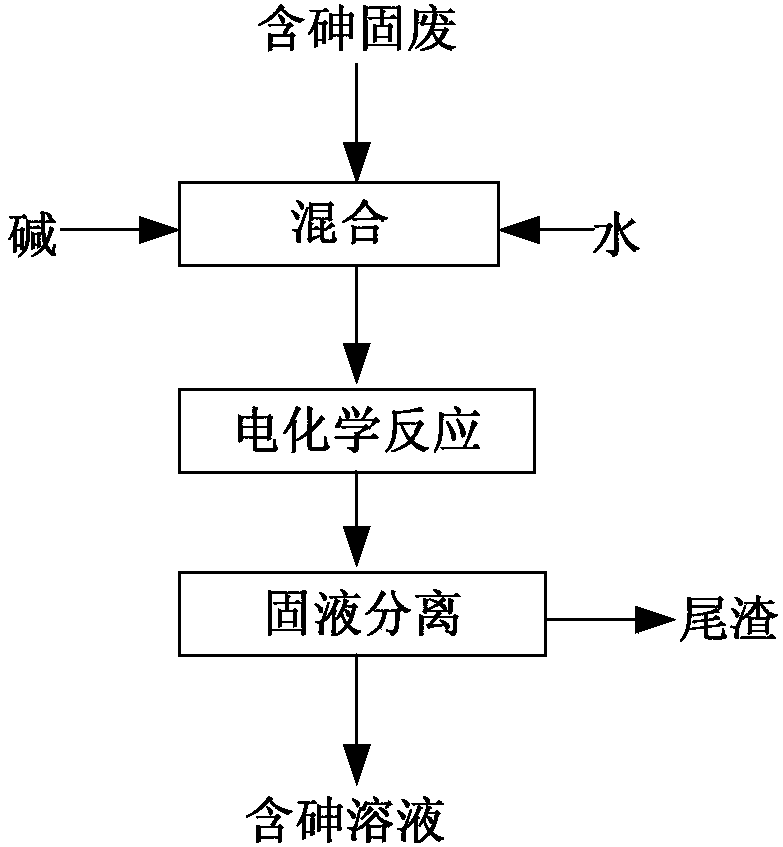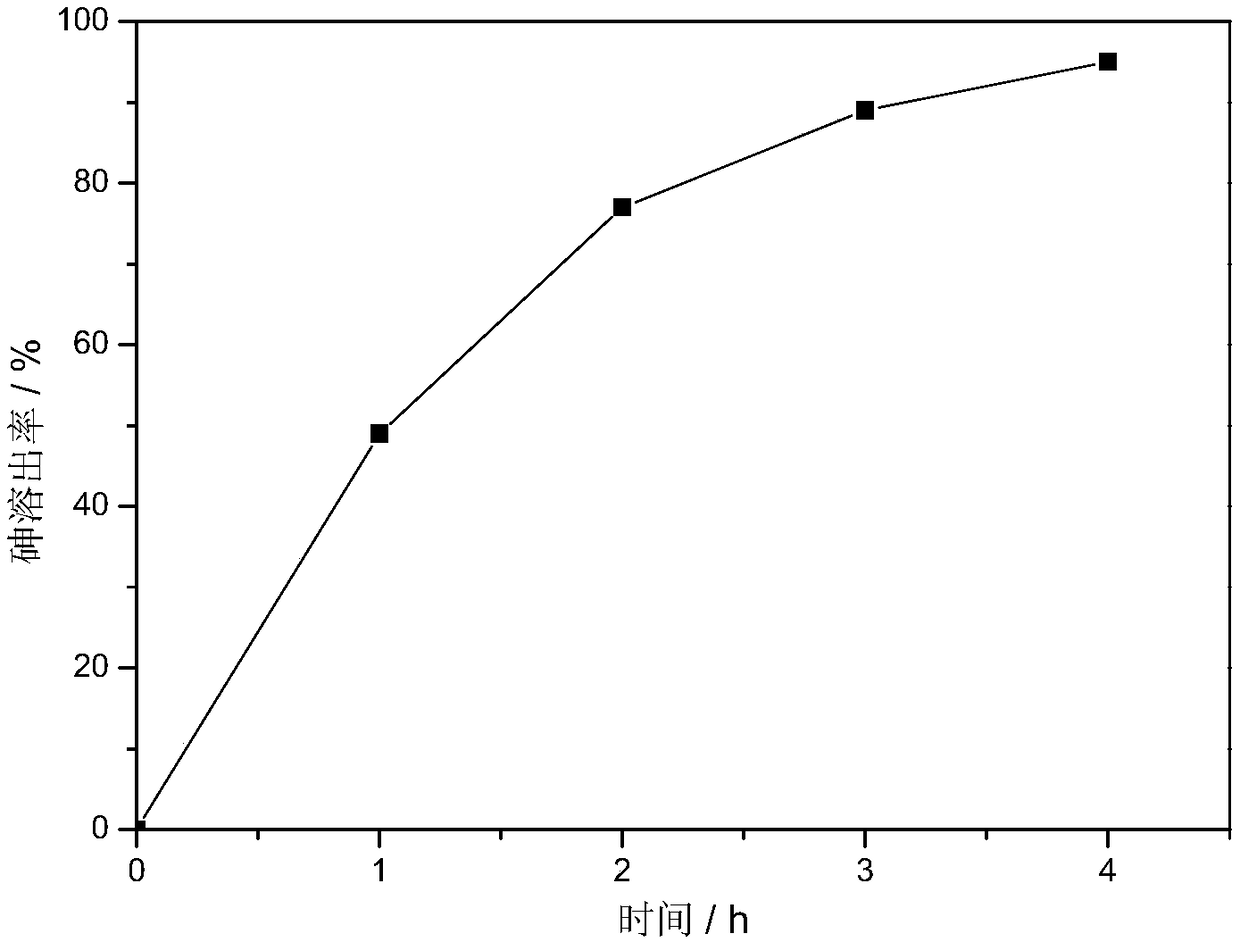Electrochemical treatment method for arsenic-containing solid waste
A treatment method, electrochemical technology, applied in the field of pollutant treatment, can solve the problems of narrow scope of application, non-disclosure, inapplicability of toxic solid waste treatment, etc., achieve good effect, reduce energy consumption, and facilitate subsequent separation
- Summary
- Abstract
- Description
- Claims
- Application Information
AI Technical Summary
Problems solved by technology
Method used
Image
Examples
Embodiment 1
[0063] A method for processing arsenic-containing smelting waste residue, comprising the steps of:
[0064] (1) Ingredients: Mix the arsenic-containing smelting residue sieved into 80 meshes with potassium hydroxide aqueous solution to prepare an electrolyte and preheat it to 60°C. The content of potassium hydroxide in the potassium hydroxide solution is 1M, containing arsenic and The liquid-solid ratio of arsenic smelting waste residue to potassium hydroxide solution is 1g / L;
[0065] (2) Electrochemical reaction: Add the raw material electrolyte obtained in step (1) into the atmospheric pressure electrolyzer, pass oxygen into the electrolyte, the oxygen flow rate is 400mL / min, the mechanical stirring rate is 800rpm, and the carbon felt electrode is used as the working electrode , with a platinum electrode as the counter electrode and a mercury / mercury oxide electrode as the reference electrode, the control potential is -1V, the electrochemical reaction time is 4h, and the el...
Embodiment 2
[0069] A method for processing arsenic-containing smelting waste residue, comprising the steps of:
[0070] (1) mixing the arsenic-containing smelting waste residue with a sodium hydroxide solution having a concentration of 0.01M, the solid-to-liquid ratio of the arsenic-containing smelting waste residue and the sodium hydroxide solution being 0.1g / L to obtain a mixture;
[0071] (2) The mixture is placed in an electrolytic cell as an electrolyte, and an electrochemical catalytic oxidation reaction is carried out at 20° C. and a stirring speed of 2100 rpm. During the electrochemical catalytic oxidation process, oxygen-enriched air is introduced into the mixture; Wherein, the time of the electrochemical catalytic oxidation reaction is 2h, the voltage of the electrolytic cell is -0.4V, and the flow rate of the oxygen-enriched air is 100mL / min; the electrolytic cell uses a carbon felt electrode as a working electrode, and a platinum electrode As the counter electrode, the mercury...
Embodiment 3
[0075] A method for processing arsenic-containing smelting waste residue, comprising the steps of:
[0076] (1) mixing the arsenic-containing smelting waste residue with an alkali solution having a concentration of 10M, the solid-to-liquid ratio of the arsenic-containing smelting waste residue and the alkali solution being 100g / L to obtain a mixture;
[0077](2) The mixture is placed in an electrolytic cell as an electrolyte, and an electrochemical catalytic oxidation reaction is performed at 140° C. and a stirring speed of 800 rpm, and air is introduced into the mixture during the electrochemical catalytic oxidation process; wherein, The time of the electrochemical catalytic oxidation reaction is 1h, the voltage of the electrolytic cell is -5.0V, and the flow rate of feeding air is 500mL / min; the electrolytic cell uses a carbon felt electrode as a working electrode, and a platinum electrode as a counter electrode, A mercury / mercury oxide electrode is used as a reference elect...
PUM
 Login to View More
Login to View More Abstract
Description
Claims
Application Information
 Login to View More
Login to View More - R&D
- Intellectual Property
- Life Sciences
- Materials
- Tech Scout
- Unparalleled Data Quality
- Higher Quality Content
- 60% Fewer Hallucinations
Browse by: Latest US Patents, China's latest patents, Technical Efficacy Thesaurus, Application Domain, Technology Topic, Popular Technical Reports.
© 2025 PatSnap. All rights reserved.Legal|Privacy policy|Modern Slavery Act Transparency Statement|Sitemap|About US| Contact US: help@patsnap.com


